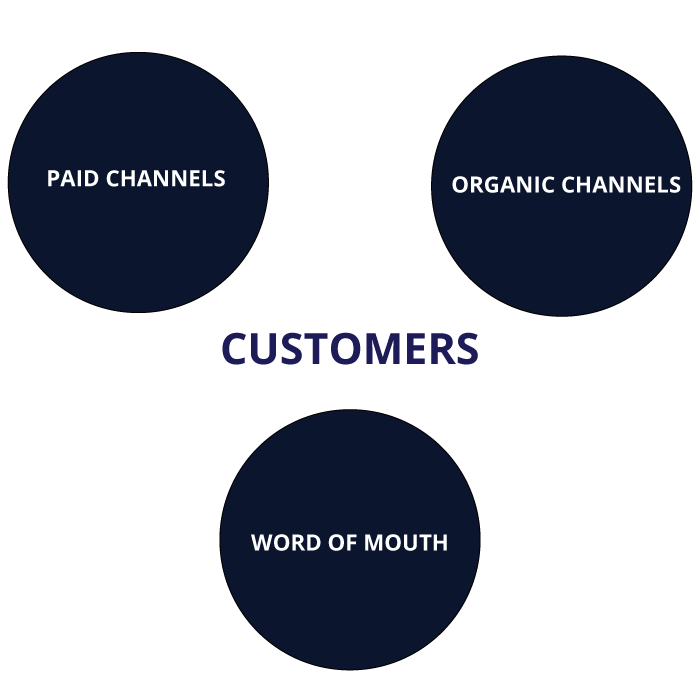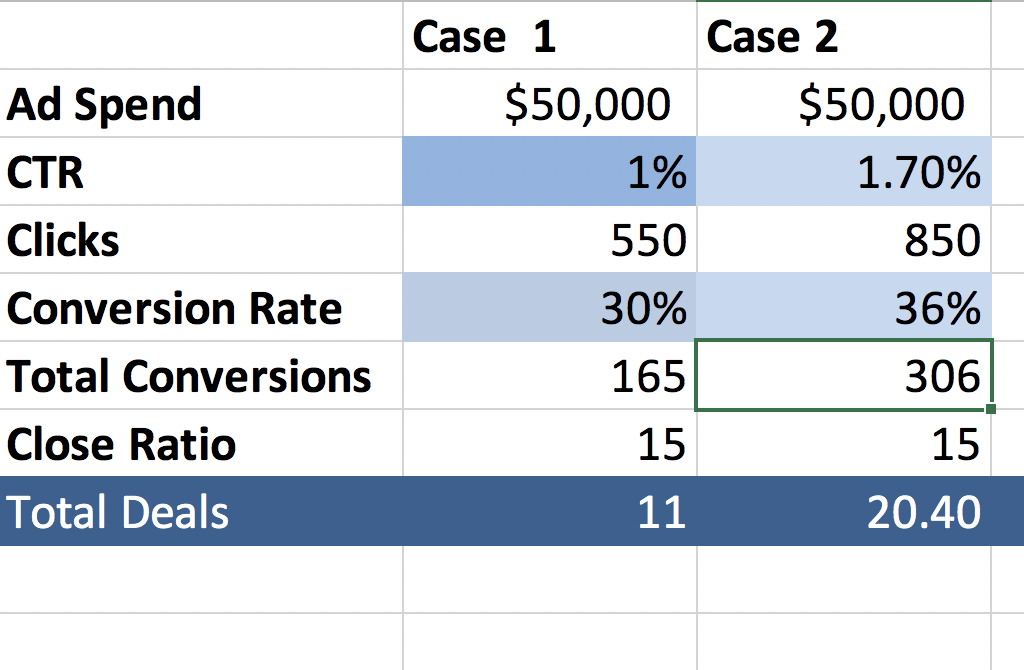
Marketing is a key piece of any growing startup regardless of your industry. I am not saying this because I am a digital marketer. Quite contrary, I am saying this because it’s the cold hard truth.
Without proper marketing and sales channels those angel and early round funds can dry up real quick. I saw it happen on multiple occasions. Most of these products that went under were great. So, why did they go under in the first place?
I have been helping a bunch of startups scale their sales and marketing team and I thought why don’t I share some of my experiences. If you are the owner of a startup or you are planning to start your own business then I highly recommend you read this whole thing. It will help you make more money and ensure you always have a steady cashflow.
Key Sales and Marketing Metrics A Startup Should Track
There are some key metrics that you should constantly monitor in your startup. These metrics will determine whether your marketing is working or not. These numbers will also give you a good picture of the growth of your startup and where you are missing out.
Paid Customer Acquisition Cost (Paid CAC) – The cost to acquire a new customer using paid marketing. For example: It takes 10 leads each costing $20 dollars to get a customer. So your paid CAC is $200.
Final Customer Acquisition Cost (Final CAC) – The final cost to acquire a customer. Usually you would add sales commissions with the paid CAC to get this number.
Lifetime Value (LTV) – One of the most important metric to track and analyze is the LTV. Your LTV will depend largely on your business model. When your startup is offering a subscription service, you need to figure out how many months an average user is staying with you. That is your average LTV. Some companies prefer an upfront payment of their service. If they are renewing every year, you need to add those numbers and come up with the lifetime value. The Lifetime value is crucial when calculating how much you can actually spend to stay profitable while maintaining a healthy ROI for your startup.
Churn Percentage – A certain percentage of your users will always discontinue with your service. You need to figure out your monthly and annual churn rates. This will help you come up with revenue projection models.
Setting Up Your Marketing Team For Success Inside Your Startup
The next stage is to setup your marketing team so that it is scalable and they can test different things really fast. We often call this marketing team setup “Agile Marketing”.
Here are some key things to consider when setting up an Agile Marketing Team:
Every department should have a department head. Department heads should meet for daily meetings and set small achievable tasks throughout the week. In case your startup is at a very early stage, make sure the entire team sits in for the meeting.
Create a master return on investment (ROI) tracking sheet. Ideally you want every department to fill in the numbers for each week or month. In order to know how your deals are coming in, each department should spend some time towards attribution. Without proper attribution you can never scale and maintain your ROI.
The marketing team needs a support system of graphic designs and web designers. You can either create this department internally or use freelancers in the beginning. The main goal of the support system is to maintain a singular & consistent style guide for your startup.
These are the 3 main pillars of an agile marketing team. Now let’s dive in on how to grow your database and build a following for your brand.
3 In 1 Marketing Approach – The Key To Success
I coined the term “3 in 1” marketing approach when I was helping a real estate team grow their presence and get deals in a really crowded space.
So, you must be thinking what is the 3-in-1 marketing approach. Let me explain it in details.
There are 3 primary ways you should focus on generating new users for your startup using different marketing channels.
Paid Channels – Paid channels include everything from Facebook Ads, Google Adwords to any private influencer sponsorships. Typically, paid channels will give you the fastest revenue results and are easily identifiable in terms of ROI.
Organic Channels – One of the biggest mistakes startups tend to make is not focus on organic brand growth when they figure out a working paid channel. Organic channels can take years to build but the ROI will be huge. Never ignore building your startup organically. Include ebooks, video marketing and lots of content related to your industry.
Word of Mouth/Referral Channels – Startups like TypeForm and DocuSign exploded when then exploited this marketing channel. It can take a while to figure out a working strategy for your word of month marketing but once you do, it can amplify your revenue growths significantly.
Revenue V.S. Profitability – What’s Important For Your Startup
When you figure out some of your growth channels, you need to make a crystal clear decision on what you want to focus on for the upcoming quarters.
Do you want to push the revenue through the roof or do you want to maximize your profits. Most startups care only about revenue in their early days and it’s a good thing.
This means as soon as you figure out different marketing channels generating you a positive ROI start scaling those campaigns.
However, ensure that your answer is “YES” to the following questions before you scale and I have learnt it from experience:
- Can my sales team handle the leads when I scale?
- Do I have enough account managers and custom support reps to handle the influx of new customers? (especially if your business has some sort of an on-boarding for new customers)
- Is my technology ready to handle the influx of traffic? (talk to your dev team before scaling)
Only when your answer is a confident “YES” you should scale up your marketing campaigns.
Marketing Geared Towards Sales Enablement – Your Next Step
By now you figured out all of the prerequisites to scale your startup and increase your marketing spend. However, there is one area that you need to tweak as part of your startup’s overall marketing strategy.
I am talking about marketing & sales working together so that they are always on the same page. Your sales team needs to be briefed about all the active campaigns and inbound emails that the marketing team is sending.
One of the most frustrating issues that many growing startups face is handling the proper email outreach channels between sales and marketing departments.
Sales reps are constantly sending their emails to prospects and the marketing team is doing their thing by blasting out value content to certain lists and segments. So, how do you ensure that the prospect do not get overloaded with emails.
Tips On Solving The Evergreen Sales v.s Marketing Who Should Send Emails Issue
#1 Personalized Email Automation
Try to automate the sales outreach email using your email marketing software as much as possible. Sales reps should only send personalized emails when it’s an opportunity. Many of the marketing automation software allows you to send emails that looks like it’s personalized by triggering them based on certain conditions inside your CRM.
#2 Restructure Call Disposition Fields Aligned With Marketing
I helped a startup fix this problem and the results were astounding. Instead of using generic dispositions like “no answer” or “not interested”, make sure that you create a list of 5 or 6 outcomes that can possibly happen after the sales call.
Create drip journeys in your email marketing software for each of these dispositions. Make sure that when you fire the email, it’s being sent from the sales rep. I use AutopilotHQ and Salesforce together in achieving this strategy. This one strategy can improve the close ratio of your entire sales team.
Optimize Ad Targeting & Landing Pages (Keep A Log)
The entire paid funnel suffers a serious blow if your ads and landing pages are not optimized. A better ad targeting the right audience will get higher CTR (Click through rates), keeping the cost per click down.
Now, when someone lands on a landing page and converts at a higher rate, it keeps the overall cost per lead low.
Take a look at the image below to understand how a tiny improvement in both CTR and landing page conversion rates can have a huge impact on the overall CAC (Customer Acquisition Cost).
Keep A Company Wide Marketing Guideline
The marketing guideline is absolutely critical to in achieving consistently across design and message. When you start adding more people in your marketing department, you need to ensure that you startup is keeping it’s branding constant across multiple channels and mediums.
This is why a marketing guideline is so important. Start with a simple 1 pager and build it up as you marketing team expands inside your startup.







0 Comments